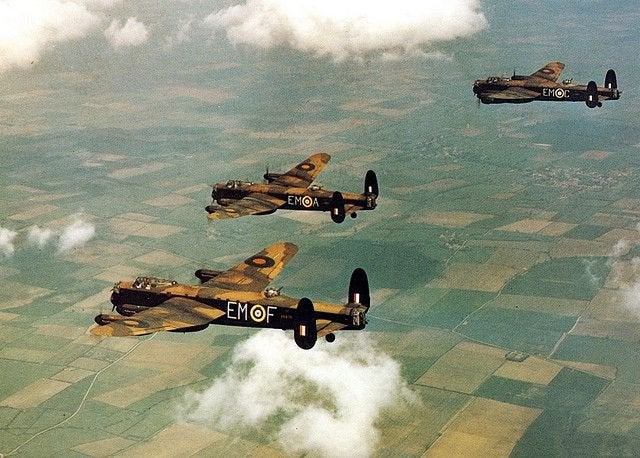No 207 Squadron was part of No 5 Group Royal Air Force Bomber Command and was based at RAF Bottesford in North East Leicestershire from 17th November 1941 to 20th September 1942, after which it moved to RAF Langar just across the border in Nottinghamshire. The Squadron was known as ‘Leicester’s Own’ as in the immediate pre-war period the RAF had mounted a campaign to increase public support by encouraging cities to adopt squadrons officially.
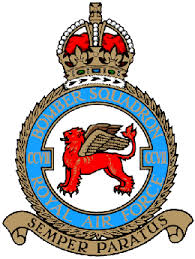

On 21st June 1939 the Leicester Mercury reported: Now Leicester Has An R.A.F. Squadron Leicester was not mentioned when the scheme for the affiliation of R.A.F Squadrons to principal cities and towns of the country was announced in April last, but the Air Ministry now announces new affiliations, including that of No. 207 Bomber Squadron to Leicester. This squadron’s station is Cottesmore, and its Commanding Officer is Wing- Commander J. N. D. Anderson, who is now honorary member of the Leicestershire Aero Club. The squadron will pay an annual ceremonial visit to Leicester, and, it is understood, will give a display at Leicester Air port. On this occasion the public will be afforded an opportunity of inspecting aircraft when on the ground and meeting the crews. The squadron which will “watch over Leicester,” will probably co-operate with other air interests in important civic events, providing Service commitments permit. Leicester Natives The total number of towns now affiliated to R.A.F. squadrons is 59. Several members of No. 207 Squadron are Leicester-born men. Another squadron at Cottesmore is affiliated with the municipality of Shrewsbury. Mr. Roy Winn, of the Leicestershire Aero Club, to-day welcomed the news of the Cottesmore squadron’s affiliation to Leicester. a very good idea,” he said. At the opening of Derby Airport the Hucknall squadron, affiliated to Derby, put up great show. Leicester can look forward to similar display.”
On the evening of the 5th/6th August 1942, the Royal Air Force Bomber Command dispatched 25 heavy bomber to attack The Ruhr in Germany. 17 aircraft were targeting Essen, and the remainder 8 were sent to Bochum. The intention was for the bombers to reach their target areas by Gee and then bomb visually through gaps in the cloud.
Out of the 17 aircraft dispatched to Essen only 1 managed to bomb the target and 3 out of the 8 sent to Bochum bombed their target.
From the 25 aircraft sent, 5 aircraft were lost over Europe, 3 Halifax bombers, 1 Lancaster and 1 Wellington with a further aircraft crashing in England on its return.
In addition to the main bomber force, Bomber Command were also involved in minor operations with 57 aircraft on ‘Gardening’ Ops laying vegetables (minelaying) off France, Holland and Germany plus a further 14 aircraft on leaflet flights.
No 207 ‘Leicesters Own’ Sqn aircraft were involved in both the major and minor bomber forces. However, not all of the Squadrons crews took part in these ‘Ops’ as some of those newly arrived on the Sqn were tasked with local training flights.
According to the Squadron Operational Record Book (ORB), the entry for the 5th August states: “Fair. Six aircraft detailed for operations. Two attacked last resort targets. One a/c Captain (F/Lt Ings) failed to return to base. During local night flying Bar U crashed into B on landing. Five members of the crew ere killed and five injured.”
The ORB Record of Events records the following aircraft as being involved:
Lancaster R5633 ‘R’ – Bombing – Target not attacked owing to U/S T.R. Heavy accurate flak was encountered at 23000 feet consisting of box barrages with no searchlight co-operation. Trailing aerial shot away 0054 23000 target not reached, no cloud but heavy ground haze. 5 x 2000lbs and 16 bundles nickles jettisoned 0054 23000 feet at 5105N 0710E.
Lancaster R5761 ‘T’ – Bombing – Aircraft failed to return to base. No contact established. Crew F/Lt Ings G A Sgt Bell-Berry R F/S Shapter W J A F/S Everitt G C Sgt Culley J Sgt Manser D R Sgt Holland J W E
Homeward-bound, ‘T’ for Tommy was shot down by the night fighter crew of Oberleutnant Loos & Unteroffizier Gumm of the 1./NJG 1, who were flying a Bf 110 F-4 from Venlo airfield.
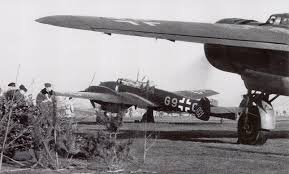
Flt Lt Gerald Ings and the rest of the crew for ‘T’ for Tommy are buried in the CWGC Uden War Cemetery, approximately 23 miles South West of Nijmegan.
Lancaster R5674 ‘S’ – Gardening – Primary target gardening attacked at 0328Hrs from 400 feet in poor visibility. IAS 170mph, 5 vegetables at 7 seconds intervals. Garden identified by pinpoint from Point de Grave. No results seen.
Lancaster R5863 ‘K’ – Gardening – Primary garden attacked at 0330 from 600′. IAS 155mph TI 4 seconds. Weather conditions were hazy at 1000 feet and above but good visibility below. Garden was identified visually by pinpoint South of Grace Point and 5 mines were dropped. Opposition was encountered from light flak on both sides of estuary. 5 splashes seen, apparently successful.
Lancaster L7582 ‘D’ – Gardening – Primary garden attacked at 0322 from 800 feet at 160 IAS. Time interval 6 seconds. Visibility was good and garden was identified by pinpoint on Point de Grave 5 veg were dropped and no results were obtained.
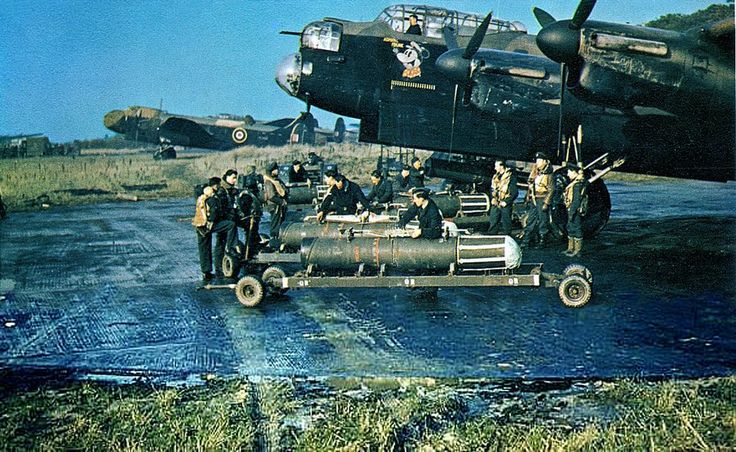
At 00:05Hrs on the 6th August, tragedy struck No 207 Sqn and RAF Bottesford when Sergeant Akerman landed Lancaster R5550 B for Beer after completing a local training flight.
The landing itself was uneventful but due to repairs being carried out on the Bottesford airfield perimeter track, Akerman was ordered by Flying Control to taxi back down the main runway due to the perimeter track being out of use.

Sergeant Frederick Akerman was the pilot of Lancaster MkI R5550 ‘EM-B’ of No 207 Sqn Conversion Flight and he and his crew had been on a routine training flight. In addition to Akerman, the pilot, the crew consisted of: Flight Engineer – Sergeant Harold Curson Observer – Sergeant John Brooks Wireless Operator/Air Gunner – Flight Sergeant AFG Smart Air Gunner – Flight Sergeant Dick Ikin

At the same time as Akerman was in the air in Lancaster ‘B for Beer’, Sergeant Arthur Pearson was also airborne on a similar training flight in Manchester MkI L7385 ‘EM-U‘. Pearsons crew aboard ‘U for Uncle’consisted of: Flight Engineer – Sergeant John Forbes Wireless Operator/Air Gunner, – Sergeant Caleb Shepherd Air Gunner – Sergeant J Slater Air Gunner – Sergeant A Whitehead
Meanwhile, confusion arose in the Control Tower and the controller believed that Akerman and his Lancaster B for Beer was clear of the runway and permission was given for Pearson to land in Manchester U for Uncle.
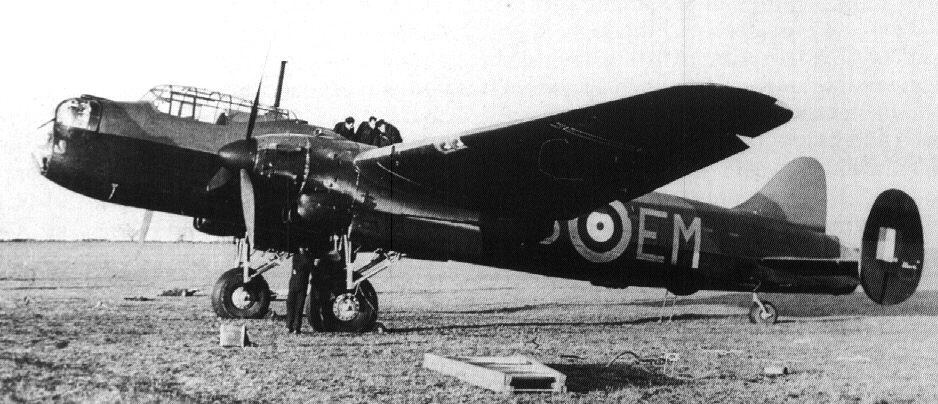
Sadly there was nothing that could be done and the two bombers met head-on on the runway. Immediately following the collision, there was an explosion during which four crew were killed instantaneously. RAF Bottesfords ambulance and fire tender raced to the scene but couldn’t do anything to save them. A fifth crewman died shortly after the collision in the arms of the Station Medical Officer, Alan Ambrey-Smith.
Amongst the dead were Frederick Akerman, pilot of the Lancaster B for Beer, his Observer Flight Sergeant John Brooks and his Flight Engineer, Sgt Curson. Also killed were the Flight Engineer and Wireless Operator/Air Gunner from Manchester U for Uncle, Sgt John Forbes and Sgt Caleb Shepherd respectively.
Miraculously, five crewmen had escaped from the collision alive, although with varying degrees of injury.
The pilot of U for Uncle, 20 year old Sergeant Arthur Pearson, was admitted to the Burns Unit at the RAF hospital at Rauceby. He later returned to flying, but not operationally.
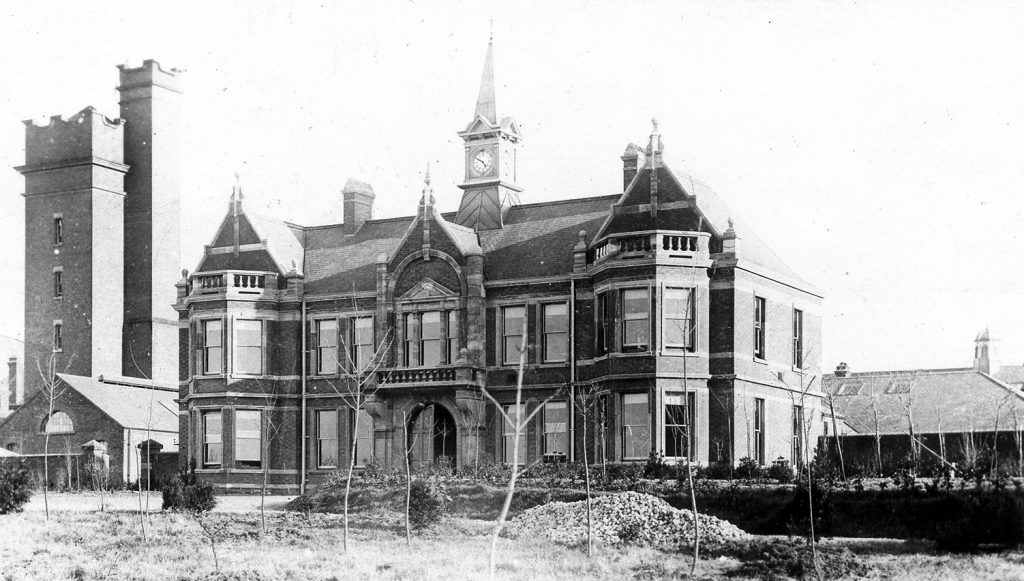
Known formally as No 4 RAF Hospital Rauceby, the hospital acted in many ways as a satellite to the Cranwell unit, with 1000 beds, focusing its Crash and Burns unit on supporting aircrew injured on operations. Most famously the pioneering plastic surgeon Archibald McIndoe was part of this team, many of his early patients forming a drinking club known as the ‘Guinea Pig Club’. The wartime Burns Unit was situated in Orchard House, built alongside the hospital orchard.
Flight Sergeant Dick Ikin, sitting in the rear turret of the Lancaster suffered shock and concussion. His only recollection of the accident was of waking up briefly in the ambulance and seeing another airmen whose face was covered in blood, at which point he passed out again. Sent home to Brighton to convalesce, he stayed out later than usual one night and decided to catch a bus home. Unfortunately the driver was having none of it, and declared ‘This bus is for war-workers only!’, Dick lkin’s reply is not recorded.
Sergeant Frederick Samuel Akerman was born on 3rd April 1919 and was the son of Ernest John Akerman, and of Alice Akerman, of St. Albans, Hertfordshire.
At the time of the 1939 register being taken, he was listed as living at 8 Colham Avenue, Hillingdon in the district of Yiewsley and West Drayton. Listed at the same address in the register were his father Ernest, a general Labourer, his mother Alice, unpaid domestic duties and his brother Ernest, a floor polish packer, whilst Fredericks job was listed as chief clerk and cashier.
Frederick enlisted into the RAF as a Sergeant pilot and allocated service number 655412. Following the accident, his body was claimed by his family and buried in Row F. Grave 4, Hillingdon and Uxbridge Cemetery. For more information, see his CWGC Casualty Record.
Sergeant Harold Curson was born in the 1st quarter of 1919 and was the son of Sidney Herbert and Mabel Frances Curson of Hockering in Norfolk.
At the time of the 1939 register, Harold’s parents were listed as living at The Mill Farm, Hockering in the Mitford and Launditch rural district of Norfolk. Harold’s father, Sidney was listed at a farmer (employer), and his mother Mabel as unpaid domestic duties. Also at the family address were his brothers Raymond and Kenneth as farm workers assisting their father, and the sister Alice who was a mental nurse. Te register made no mention of Harold.
Harold enlisted into the RAF as a Sergeant Flight Engineer and allocated service number 537658. He is buried in Bottesford (St Mary) Churchyard. For more information, see his CWGC Casualty Record.
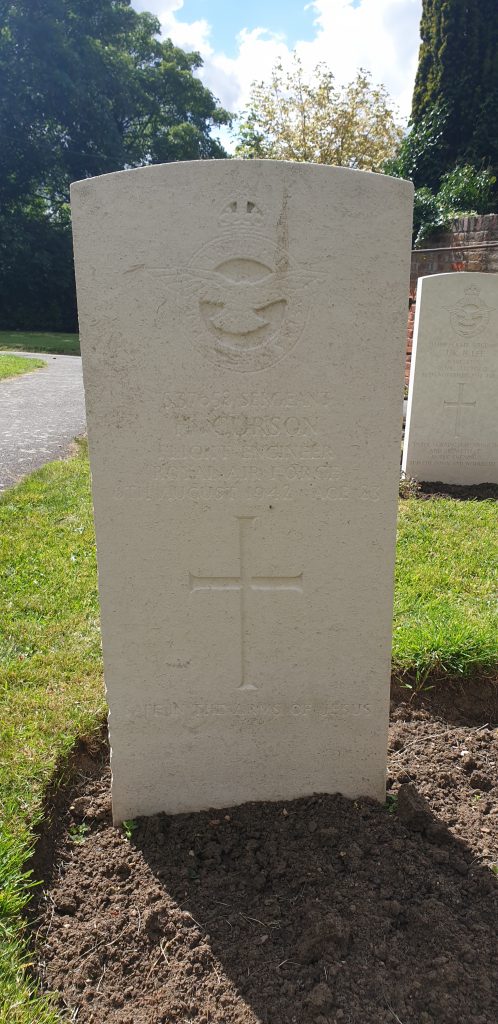
Harold enlisted into the RAF as a Sergeant Flight Engineer and allocated service number 537658. He is buried in Bottesford (St Mary) Churchyard. For more information, see his CWGC Casualty Record.
Sergeant John Forbes was born in 1920 and was the son of John Forbes and of Elsie Forbes of Woodside, Aberdeen. Prior to the war, he was a mechanic at the Balgownie Dairy.
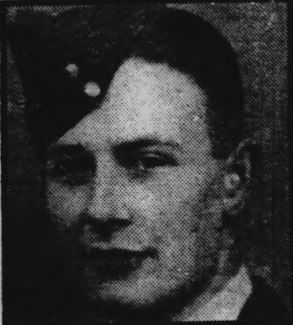
In September 1940, he married Mary Wigglesworth of Morcombe, Lancashire. The couple had their first child Valerie in March 1941. Mary was pregnant with their second child Christine when John was killed. Christine was born in December 1942.
John enlisted in the RAF Volunteer Reserve as a Sergeant, Flight Engineer and was allocated service number 967145. He is buried in Aberdeen Grove Cemetery in Joint grave 2059 with his brother Sgt James Forbes who was a Flight Engineer in the RAF and died 9th March 1945. For more information, see his CWGC Casualty Record.
BROOKS John, 924977, Flight Sergeant, Observer, RAF(VR). John was the son of Thomas William and Jane Brooks, of Old Windsor, Berkshire. He is buried in Class C. Cons. Grave 3332, Arnold Cemetery. For more information, see his CWGC Casualty Record.
Caleb Stanley Kenneth Shepherd was born during the 3rd quarter of 1922 in Chester. He was the son of Stanley and Jane Shepherd. According to the 1939 register, the family lived at 15 Queen Street Chester and Stanley was listed as a taxi driver/proprietor/owner/driver and Jane as unpaid domestic duties.
Caleb enlisted into the RAF Volunteer Reserve as a Sergeant, Wireless Operator/Air Gunner and allocated service number 1112237. He is buried in Sec. C. New Portion. Grave 233 of the Chester (Overleigh) Cemetery. For more information, see his CWGC Casualty Record.
August was a particularly bad month for casualties for No 207 Sqn with the night of Wednesday 5th/Thursday 6th August standing out as the worst single night.
Personnel from Leicester’s Own No 207 Squadron that made the ultimate sacrifice are remembered in the Squadron’s Book of Remembrance on display at Leicester Cathedral. Displayed above the BoR is the Squadron standard that was Laid Up when the Squadron disbanded in 1984. This Standard was presented by HM The Queen to the Squadron in 1956 and was the first to be presented by the Reigning Sovereign in person.
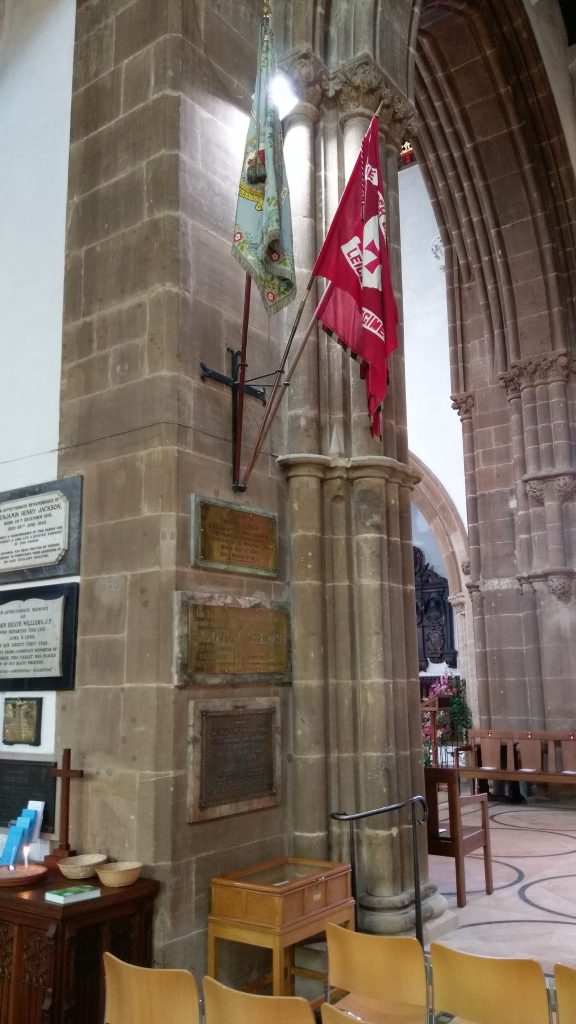

In addition to the Book of Remembrance at Leicester Cathedral, there is a memorial and Roll of Honour/Book of Remembrance in St Mary the Virgin Church at Bottesford.
“We Will Remember Them”

